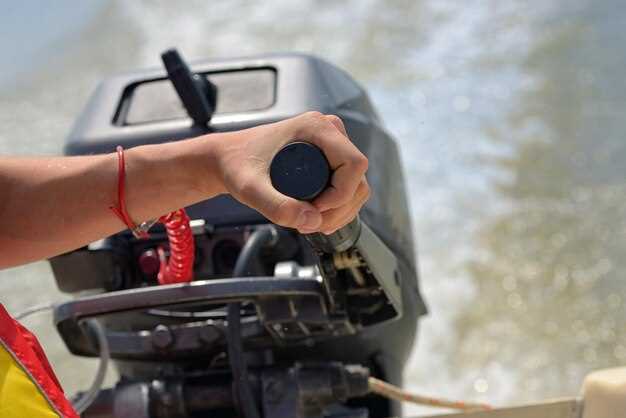
Owning a saltwater boat can be a rewarding experience, providing countless hours of enjoyment on the water. However, the unique challenges posed by saltwater environments mean that proper care and maintenance are crucial to keeping your vessel in top condition. Neglecting maintenance can lead to corrosion, equipment failure, and ultimately shorten the lifespan of your boat.
To ensure your boat remains in excellent shape, it’s essential to understand the specific challenges associated with saltwater exposure. Regular cleaning, thorough inspections, and proactive care can greatly reduce wear and tear, helping you avoid costly repairs down the road. In this article, we will explore vital tips and best practices for maintaining your saltwater boat, focusing on both the hull and the onboard systems.
From rinsing off salt deposits to checking vital components, following these maintenance tips will empower you to take exceptional care of your boat, ensuring more enjoyable outings and a longer-lasting investment. Read on to discover how to enhance the longevity and performance of your saltwater vessel.
Regular Cleaning Procedures for Saltwater Boats
When it comes to caring for your saltwater boat, regular cleaning is essential to maintain its performance and longevity. Saltwater exposure can lead to corrosion, staining, and the buildup of marine growth, making it crucial to establish a routine cleaning regimen.
Start by rinsing the boat with fresh water after every outing. This simple step removes salt and debris that can cause damage over time. Use a hose with a nozzle to ensure thorough coverage, paying particular attention to areas where salt can accumulate, such as the hull, fittings, and crevices.
Next, invest in a quality boat soap specifically designed for marine use. Using a soft sponge or wash mitt, apply the soap using circular motions to lift dirt and grime. Avoid abrasive cleaners or materials, as they can scratch the surface of your boat, leading to further maintenance issues.
After washing, rinse the boat again with fresh water to remove any soap residue. This will prevent streaks and water spots from forming. While rinsing, check for any signs of corrosion or wear, and take note of any areas that may need further attention.
Clean the exterior metal components, such as railings and fittings, with a stainless steel cleaner to prevent rust and staining. Apply the cleaner with a soft cloth and buff to a shine. Regular attention to these components helps maintain their luster and protects against the harsh saltwater environment.
Don’t forget about the interior of your boat. Vacuum and wipe down all surfaces, including seat cushions and storage compartments, to remove sand and debris. Consider using a marine-grade vinyl cleaner for upholstery to keep it looking fresh.
Lastly, check and clean the bilge area regularly. Pump out any water and wipe down surfaces to prevent the buildup of mold and mildew. This area can often be overlooked, but its cleanliness is vital for overall boat health.
By implementing these regular cleaning procedures, every boat owner can ensure that their vessel remains in optimal condition, enhancing both its appearance and performance over time.
Preventative Measures Against Corrosion and Rust

Corrosion and rust are significant threats to saltwater boats due to the highly corrosive nature of saltwater environments. To protect your boat, it’s essential to adopt effective preventative measures.
First, applying a high-quality anti-corrosive paint to metal surfaces can create a protective barrier against saltwater exposure. Make sure to select marine-grade products specifically designed for boats. Regularly inspect and reapply this coating as needed, especially in areas exposed to harsh weather.
Another crucial step is to regularly clean your boat, removing salt residue after every trip. Use fresh water and a soft brush to wash the hull, hardware, and all metal parts. This prevents salt build-up, which accelerates corrosion.
Utilizing anode systems, such as zinc or aluminum anodes, can also help prevent corrosion. These sacrificial anodes corrode in place of vital metal components, extending the lifespan of your boat’s critical parts. Make sure to check and replace them frequently, especially if you notice significant wear or depletion.
Storing your boat properly when not in use is vital. If possible, keep the boat in a dry, covered space to minimize exposure to saltwater. If moored in water, consider using a boat cover to shield surfaces from the elements.
Finally, regularly inspect and maintain all hardware and fittings. Look for signs of wear, rust spots, and damaged seals. Addressing issues early can prevent larger problems down the road, ensuring your boat remains in top condition.
Seasonal Maintenance Checklist for Saltwater Vessels

Proper care of your saltwater boat is essential for maintaining its performance and longevity. Following a seasonal maintenance checklist ensures that all critical areas receive attention and potential issues are addressed before they escalate.
Spring Maintenance:
- Inspect the hull for damage or cracks and perform necessary repairs.
- Clean and repaint the bottom using anti-fouling paint to prevent marine growth.
- Check the fuel system for leaks and replace any old fuel filters.
- Examine the engine’s oil and coolant levels, changing the oil if needed.
- Inspect the battery for corrosion, clean terminals, and check the charge.
- Test all electrical systems including lights, pumps, and navigation equipment.
Summer Maintenance:
- Frequent cleaning of the hull and deck to remove salt buildup.
- Ensure that all safety gear is in compliance and easily accessible.
- Check the condition of rigging and sails to prevent failures while sailing.
- Monitor engine temperature and performance; inspect belts and hoses for wear.
- Examine through-hull fittings and seacocks to ensure proper operation.
Fall Maintenance:
- Thoroughly wash and dry the boat to prevent mold and mildew growth.
- Remove all food and perishable items to avoid attracting pests.
- Change the oil and fuel filters, and stabilize the fuel for winter storage.
- Winterize the engine by draining fluids and adding antifreeze where necessary.
- Inspect and repair any canvas covers, ensuring they are water-resistant.
Winter Maintenance:
- Check the condition of the boat cover or shrink wrap to protect against the elements.
- Inspect the trailer for rust and functioning tires; make necessary repairs.
- Regularly check for moisture buildup inside the boat and ventilate as needed.
- Perform routine checks on the boat’s supports to ensure stability during storage.
Adhering to this seasonal maintenance checklist will help in preserving the integrity of your saltwater vessel, ensuring that it remains well-maintained and ready for the next adventure on the water.



